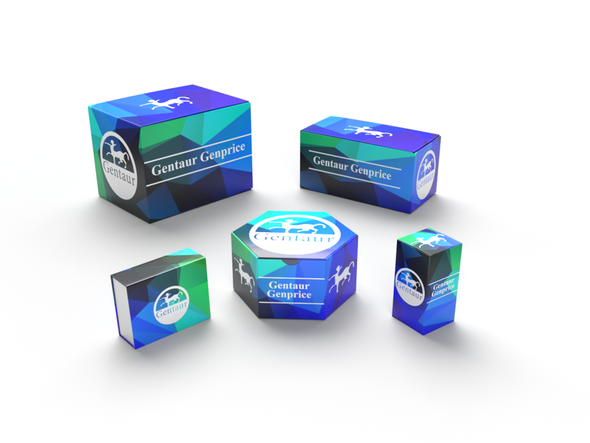749
Human Keratin, type I cytoskeletal 14 (KRT14) ELISA Kit | KTE61884
- SKU:
- 749-KTE61884
- Availability:
- Usually ships in 5 working days
Description
Human Keratin, type I cytoskeletal 14 (KRT14) ELISA Kit | KTE61884 | Gentaur UK, US & Europe Distribution
Application: This Human Keratin, type I cytoskeletal 14 (KRT14) ELISA Kit employs a two-site sandwich ELISA to quantitate KRT14 in samples. An antibody specific for KRT14 has been pre-coated onto a microplate. Standards and samples are pipetted into the wells and anyKRT14 present is bound by the immobilized antibody. After removing any unbound substances, a biotin-conjugated antibody specific for KRT14 is added to the wells. After washing, Streptavidin conjugated Horseradish Peroxidase (HRP) is added to the wells. Following a wash to remove any unbound avidin-enzyme reagent, a substrate solution is added to the wells and color develops in proportion to the amount of KRT14 bound in the initial step. The color development is stopped and the intensity of the color is measured.
Detection Method: Colorimetric
Conjugate: N/A
Sample Type: Cell culture supernatants#Serum#Plasma#Other biological fluids
Assay Type: Multiple steps standard sandwich ELISA assay with a working time of 3-5 hours. It depends on the experience of the operation person.
Kit Component: • Human Keratin, type I cytoskeletal 14 microplate
• Human Keratin, type I cytoskeletal 14 standard
• Human Keratin, type I cytoskeletal 14 detect antibody
• Streptavidin-HRP
• Standard diluent
• Assay buffer
• HRP substrate
• Stop solution
• Wash buffer
• Plate covers
Features & Benefits: Human Keratin, type I cytoskeletal 14 (KRT14) ELISA Kit has high sensitivity and excellent specificity for detection of Human KRT14. No significant cross-reactivity or interference between Human KRT14 and analogues was observed.
Calibration Range: Please inquire
Limit Of Detection: Please inquire
Usage Note: • Do not mix components from different kit lots or use reagents beyond the kit expiration date.
• Allow all reagents to warm to room temperature for at least 30 minutes before opening.
• Pre-rinse the pipet tip with reagent, use fresh pipet tips for each sample, standard and reagent to avoid contamination.
• Unused wells must be kept desiccated at 4 °C in the sealed bag provided.
• Mix Thoroughly is very important for the result. It is recommended using low frequency oscillator or slight hand shaking every 10 minutes.
• It is recommended that all samples and standards be assayed in duplicate or triplicate.
Storage Instruction: The unopened kit should be stored at 2 - 8°C. After opening, please store refer to protocols.
Shipping: Gel pack with blue ice.
Precaution The product listed herein is for research use only and is not intended for use in human or clinical diagnosis. Suggested applications of our products are not recommendations to use our products in violation of any patent or as a license. We cannot be responsible for patent infringements or other violations that may occur with the use of this product.
Background: Keratin 14 is a type I cytokeratin. It is usually found as a heterotetramer with two keratin 5 molecules, a type II keratin. Together they form the cytoskeleton of epithelial cells.Mutations in the genes for these keratins are associated with epidermolysis bullosa simplex and Dermatopathia pigmentosa reticularis, both of which are autosomal dominant mutations. KRT14 belongs to a large group of acidic type I keratins that interact with basic type II keratins to form the 8-nm cytoskeletal filaments of epithelial cells. Both type I and type II keratins have a central alpha-helical domain of over 300 amino acids that mediates keratin interaction. KRT14 is expressed in the basal layer of stratified squamous epithelia, including epidermis .
Alternative Names: KRT14; CK14; EBS3; EBS4; K14; NFJ; cytokeratin 14; keratin 14 (epidermolysis bullosa simplex; Dowling-Meara; Koebner)
Search name: KRT14; CK14; EBS3; EBS4; K14; NFJ; cytokeratin 14; keratin 14 (epidermolysis bullosa simplex; Dowling-Meara; Koebner)
Tag: KRT14






